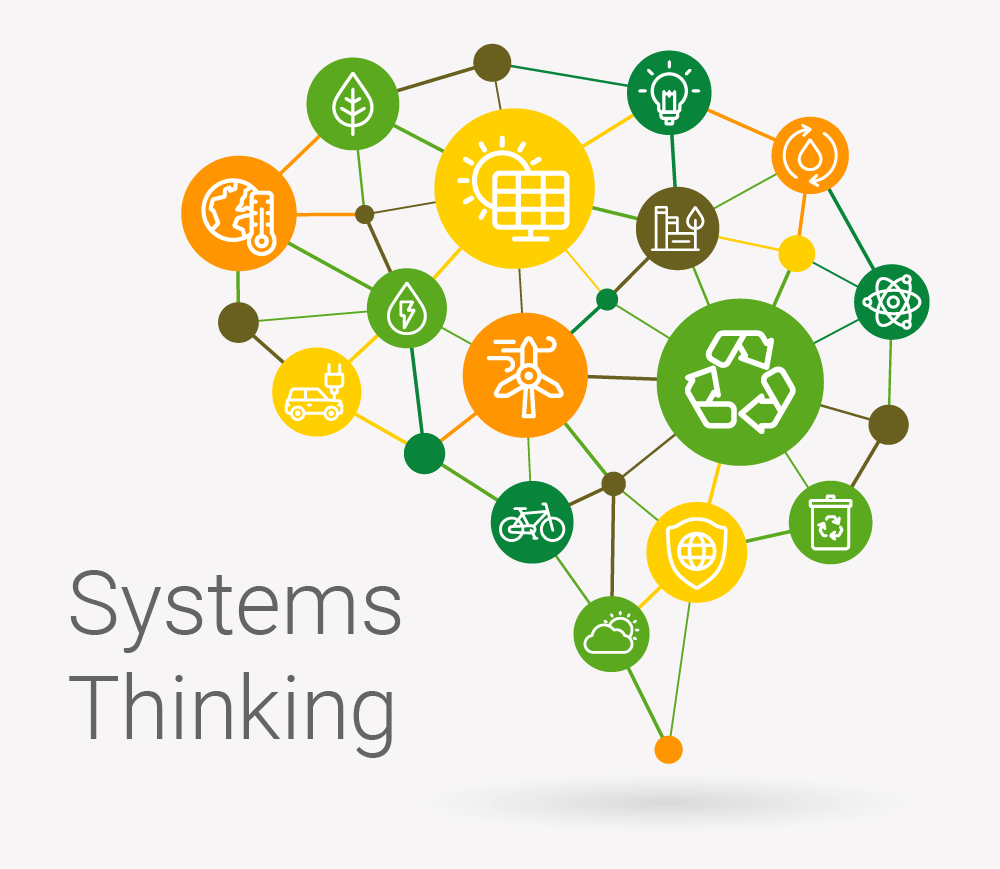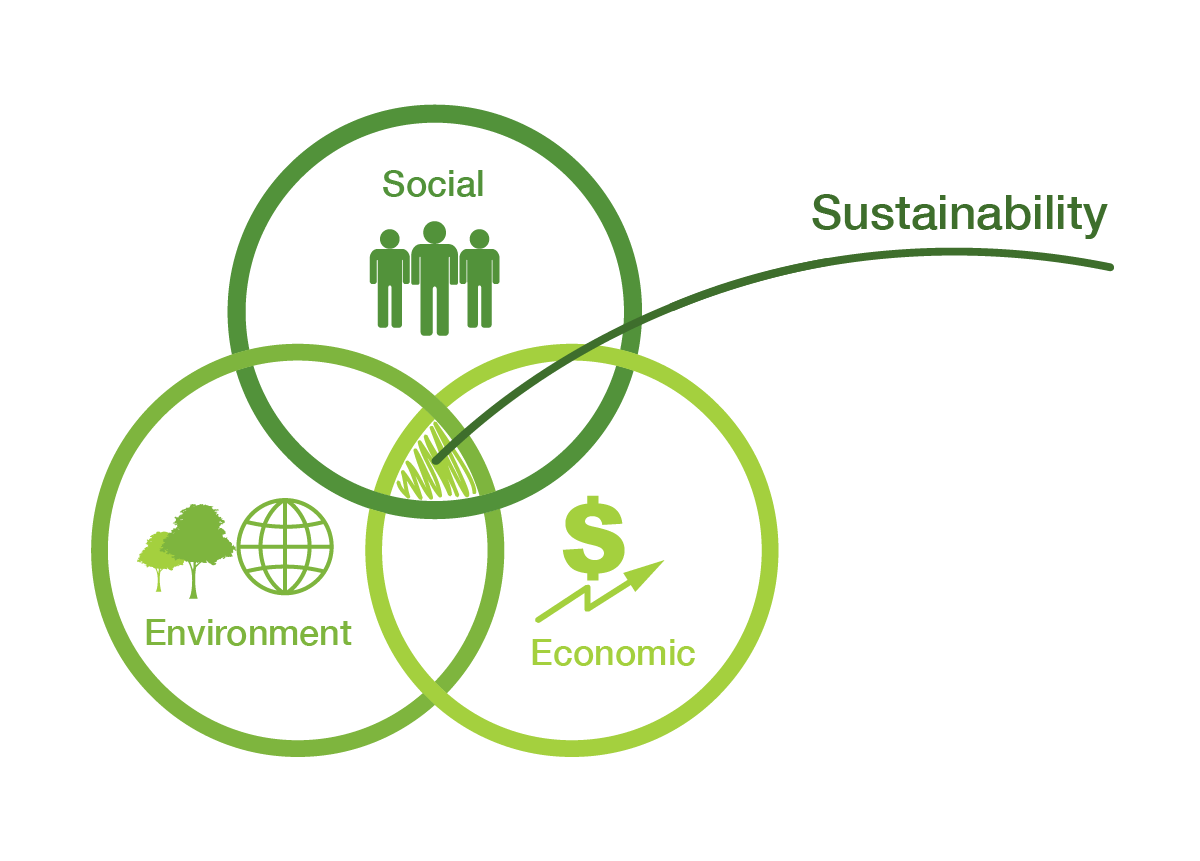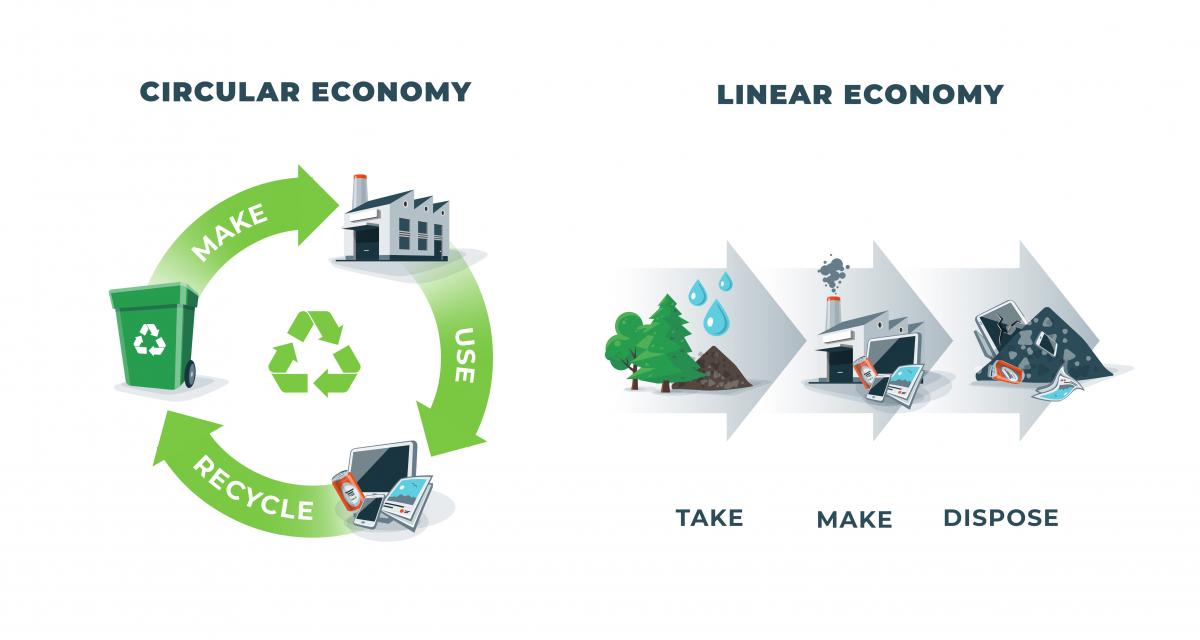Systems thinking
What is a system?
We can think about the world we live in as a series of connected systems, from the solar system down to your local transport systems.
Systems thinking is used in science to describe complicated relationships between parts of a whole. We talk about the ‘solar system’ to describe the group of planets and objects that orbit our sun. The solar system is a whole and each planet and the sun are the parts. There are also gravity, asteroids, heat, moons and more in this system.

Image atribution: Hilch on Adobe Stock
Systems thinking in sustainability is a way of thinking about how we make goods and deliver services. It considers the environmental and social impacts for different businesses.
In the solar system, we know that changes in the sun or other objects in the system, have effects on Earth. In business, we know that changing how much workers are paid or what materials we use affects social and economic systems. We also know that what happens in business affects the system we all live in — the Earth.
The environment is a planet-wide system that affects us all. The economy is another system, a way of deciding value and exchanging goods and services. People live in societies in which there are also systems though these might not be as obvious as in a physical system.
All these different systems interact with each other. A change in the solar system can cause a change on Earth. A big solar storm causes blackouts. A change in the environment causes a change in society. Increased temperatures make people spend more time in their homes and less time socialising.
The United Nations Sustainable Development Goals are a way of making changes that have positive outcomes in many systems.
We have economic, social and environmental problems that are related to each other. The United Nations includes poverty, equality and justice in the Sustainable Development Goals because we cannot fix one system and cause a problem in another.

Image attribution: adapted from a diagram by flyalone on Adobe Stock
Other pages in this section
-
Systems thinking: triple bottom line - this way of approaching sustainability is also known as People, Planet and Profit.
Time to complete 10 minutes -
Systems thinking: unexpected consequences - sometimes you try to do the right thing, but cause a problem somewhere else.
Time to complete 10 minutes -
Systems thinking and the circular economy - circular economy describes the making of things in a closed loop (a circle), using processes that do not lead to waste or unwanted by-products.
Time to complete 10 minutes

Image attribution: petovarga on Adobe Stock
